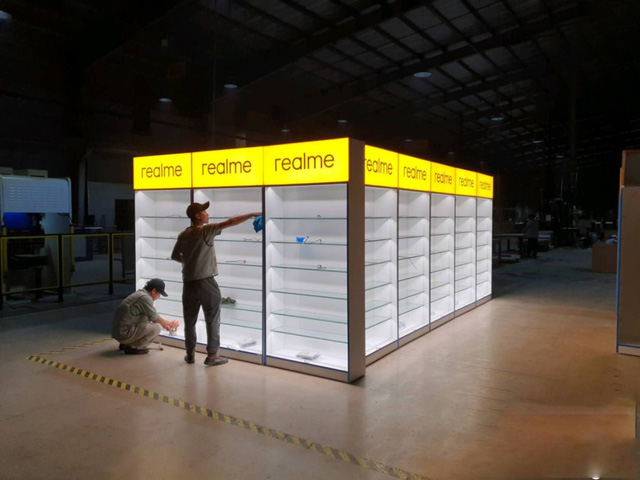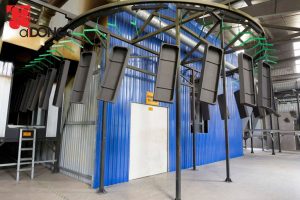Các doanh nghiệp sản xuất Trung Quốc đang vật lộn với những khó khăn đến từ mọi phía, từ khủng hoảng năng lượng, vận tải ách tắc, thiếu hụt nguồn nguyên liệu thô và “cơ hội”cho các doanh nghiệp sản xuất Việt Nam.

Các nhà máy ở Trung Quốc đang gặp khó khăn khi đối mặt với tình trạng khủng hoảng năng lượng
Sự bùng nổ trong lĩnh vực xây dựng và sản xuất đã thúc đẩy phần lớn sự phục hồi kinh tế của Trung Quốc trong năm nay và tiếp tục đóng một vai trò quan trọng trong tăng trưởng. Nhưng công việc đó đòi hỏi hàng tấn năng lượng và do đó lượng than trở nên khổng lồ. Tình trạng thiếu điện bắt đầu xảy ra vào tháng 6 nhưng đã trở nên tồi tệ hơn kể từ đó khi giá than tăng cao và các tỉnh của Trung Quốc đã cố gắng đáp ứng các mục tiêu của Bắc Kinh nhằm giảm lượng khí thải carbon.
Cuộc khủng hoảng ngày càng trầm trọng đã gây ra tình trạng mất điện đối với các hộ gia đình và buộc các nhà máy phải cắt giảm sản xuất – một mối đe dọa đối với nền kinh tế rộng lớn của đất nước và có thể gây căng thẳng hơn nữa đối với chuỗi cung ứng toàn cầu.
Julian Evans-Pritchard, nhà kinh tế cấp cao về Trung Quốc tại Capital Economics cho rằng: “Bức tranh lớn là ngành công nghiệp đang bùng phát ngay cả trước đợt thiếu điện gần đây nhất và tình trạng thiếu điện ngày càng gia tăng”, đồng thời chỉ ra rằng các báo cáo trên phương tiện truyền thông cho thấy các nhà máy ở hơn 20 tỉnh đã phải mở rộng quy mô sản xuất.
Vận tải ách tắc và thiếu hụt nguôn nguyên liệu thô.
Cước phí vận chuyển container đã tăng gấp 5 lần, từ 3.000 lên 15.000 USD cho mỗi container. Từ vụ tàu Ever Given mắc kẹt ở kênh đào Suez hồi tháng 3 tới các ổ dịch Covid-19 mới ở trung tâm xuất khẩu Quảng Châu hồi tháng 6, chuỗi cung ứng toàn cầu đã liên tục bị gián đoạn suốt từ đầu năm đến nay.
Tàu, hàng hóa thường xuyên về trễ bởi không có tàu, không có container. hiện nay rất nhiều hàng hóa không thể xuất đi.
Làn sóng đóng cửa hoặc tạm dừng hoạt động đang lan rộng khắp các trung tâm sản xuất miền Nam Trung Quốc trong bối cảnh giá nguyên liệu thô tăng vọt làm xói mòn lợi nhuận của các nhà máy và dấy lên quan ngại về rủi ro lạm phát tại nền kinh tế lớn thứ hai thế giới. Trong bối cảnh đại dịch tàn phá nặng nề các chuỗi cung ứng toàn cầu, nhiều nhà sản xuất tại Trung Quốc cho biết chi phí để nhập nguyên liệu thô hiện tại quá đắt đỏ.

Các nhà phân tích cho rằng với xu hướng nguyên vật liệu tăng giá trên toàn thế giới, nút thắt cổ chai của chuỗi cung ứng sẽ tiếp tục duy trì qua năm sau.
Tất cả những khó khăn này khiến cho việc cung ứng hàng hoá từ Trung Quốc bị xáo trộn và gián đoạn. Chi phí đầu vào tăng cao đang kiềm hãm đầu ra của các nhà máy.
Chính quyền Trung Quốc đã có một số nỗ lực giải quyết các vấn đề nổi trội, điển hình là việc đặt hàng các mỏ than tăng sản lượng vào tháng trước, chỉ vài tháng sau khi ban hành các quy định nhằm kiềm chế khí thải carbon. Tuy nhiên các nhà phân tích chỉ ra các nỗ lực này không thể mang lại hiệu quả tức thì.
Cơ hội cho các doanh nghiệp Việt Nam
Những khó khăn không thể khắc phục trong thời gian gần của ngành sản xuất Trung Quốc đã kéo theo xu hướng dịch chuyển chuỗi cung ứng về các doanh nghiệp nội địa để giải quyết bài toán thiếu hụt nguồn cung cấp hàng và tận dụng lợi thế logistic.
Các doanh nghiệp sản xuất Việt Nam, đặc biệt là các doanh nghiệp đã trụ vững qua đợt bùng phát dịch bệnh lần thứ 4 vừa qua, đã nhanh chóng nắm bắt cơ hội này, khi nhu cầu cung ứng chuyển hướng tăng vọt đối với các nhà sản xuất trong nước.

Ông Nguyễn Thiện Ngôn – TGĐ Công ty Á Đông, một trong những nhà sản xuất quầy kệ hàng đầu Việt Nam hiện nay cho biết, trong khoảng thời gian này các thương hiệu bán lẻ tìm đến Á Đông gia tăng đột biến để bù đắp sự thiếu hụt nguồn cung quầy kệ từ các nhà sản xuất Trung Quốc. Đây là cơ hội lớn cho các doanh nghiệp cung ứng Việt Nam chứng minh được năng lực sản xuất và các lợi thế sân nhà như chất lượng, tiến độ và bài toán chi phí lâu dài nhờ giảm thiểu các chi phí trung gian, logistic.

Theo đánh giá của các công ty tư vấn logistics và quản lý chuỗi cung ứng cung ứng, Việt Nam là một trong những quốc gia có chính sách thuế cạnh tranh nhất châu Á. Tại đây các công ty có thể được hưởng lợi từ các ưu đãi thuế doanh nghiệp, miễn thuế nhập khẩu tài sản cố định và miễn tiền thuê cơ bản.
Việt Nam sở hữu chi phí nhân công và chi phí năng lượng thấp so với các quốc gia khác vì vậy Việt Nam trở thành địa điểm hấp dẫn của logistics và quản lý chuỗi cung ứng cung ứng toàn cầu. Ngoài chi phí thuê kho (bao gồm cả chi phí nhân công) thấp, Việt Nam còn có hai lợi thế khác là chính sách thuế mở và chi phí xây dựng thấp.
Trước xu hướng dịch chuyển ngày càng mạnh mẽ của các thương hiệu lớn, các doanh nghiệp sản xuất Việt Nam cũng nhanh chóng củng cố năng lực của mình để tiếp nhận và gia tăng vai trò trong chuỗi cung ứng.
Các công ty tích cực đầu tư vào công nghệ sản xuất, vận hành và hoàn thiện mạng lưới logistic với mức chi phí ngày càng cạnh tranh, nhạy bén và linh hoạt với những thay đổi của thị trường nhằm nắm bắt cơ hội từ đợt dịch chuyển lớn này.
Nguồn: https://cafebiz.vn/kho-khan-bua-vay-nganh-san-xuat-trung-quoc-co-hoi-cho-doanh-nghiep-viet-20211120121222044.chn








